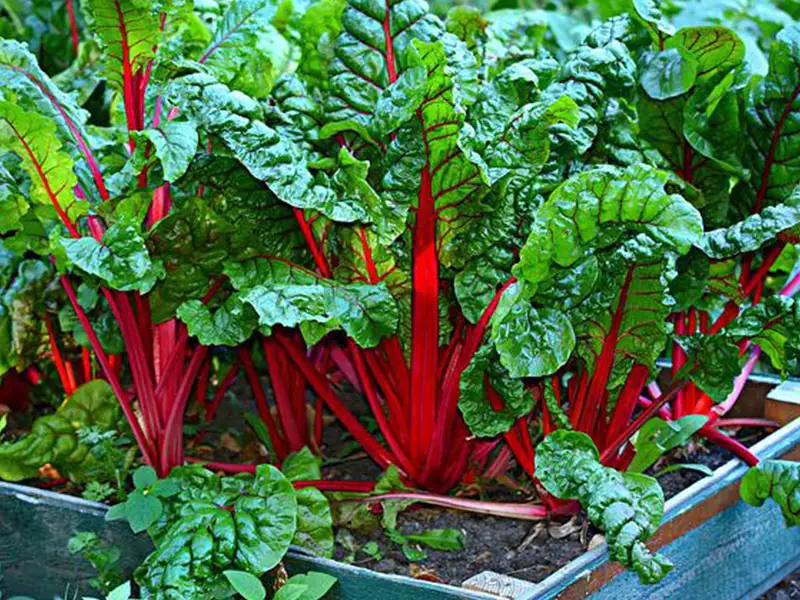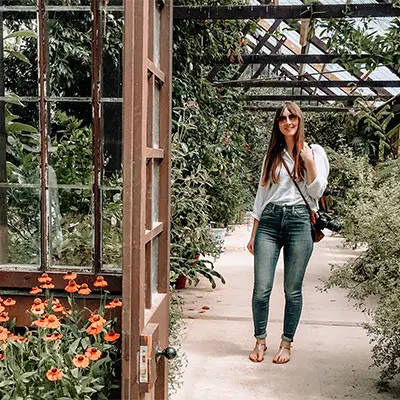21 Tasty Vegetables that Grow in Shade
July, 2022 |Seed packets and gardening books often recommend 6-8 hours of sunlight to grow fruit and vegetables. But what happens if your garden is overshadowed by next doors maple tree, or if your apartment balcony faces due north? Can you still plant tasty vegetables that grow in shade?
Whether you have an awkwardly angled balcony or a backyard surrounded by trees, there are still some fantastic, and familiar, crops you can grow in a shady space.
Why do crops need the sun?
Remember learning about photosynthesis at school? Complex science and high school biology aside… essentially, plants use sunlight as their primary source of energy to grow and produce fruit.
Six to eight hours of sunlight a day is usually considered optimum for most crops to thrive. Most plants that we harvest for food (crops) need lots of energy to produce their fruits. This is especially true for melons, peppers, and corn — even mini melon varieties need lots of sun!
However, there are certain plant groups that thrive in minimal or indirect sunlight.
Understanding sunlight levels
Usually, in gardening books and on seed packets, you’ll see something along the lines of ‘preferred position’ suggestions, which highlight how much sun a plant needs. E.g. plant in full sun, partial shade, or full shade.
Full sun: these crops will need a minimum of 6-8 hours of sunlight to successfully produce fruits. Tomatoes, corn, eggplants, and chilies all need as much sunlight as possible to grow.
Partial shade/dappled shade: these crops will typically need 3-6 hours to successfully produce fruits or develop. You can still grow fruiting plants like tomatoes, corn, or squash in partial shade, but they will generally produce more leaves and fewer fruits that might be smaller in size.
Full shade: Even in full shade, plants are still exposed to indirect sunlight and reflective surfaces like walls or windows. The crops mentioned below can survive well in indirect sunlight. They’ll generally thrive in a partially sunlit position, but you can still get a decent crop in full shade.
To get your plants off to a good start, we really recommend starting seedlings off in the sunniest spot you can find. Windowsills, a friend’s balcony or indoor grow lights can all be used to start seedlings off, then you can transplant your plants to your shady balcony or garden.
The tastiest shade tolerant crops
From leafy greens to flavourful herbs, here are 21 vegetables that grow well in shady gardens.
Salad and Stir Fry Greens
Many leafy greens can actually suffer in full sun as it can scorch their leaves. Full sun can also make plants ‘bolt’ (flower) more quickly, which means all the sugars leave the leaves, making them bitter and less tasty.
1. Lettuce
A great summer crop, lettuce is usually quick to mature, and with frequent picking, you can harvest lots of leaves from a single plant. Lettuce is particularly vulnerable to full summer sun, so keep them in a shaded area.
There are lots of tasty lettuce varieties to choose from. Some of our favorites include Green Ice, Buttercrunch, and Red Salad Bowl.

2. Bittercress
Bittercress is a popular foraged food, but it can also be grown in planters and veg beds too. Unlike its name, bittercress actually has a sweet and slightly peppered flavor. It’s actually a member of the cabbage family (Brassicaceae) but because of its delicious peppered flavor, it’s a popular salad green.
3. Arugula
Arugula goes by many names, from rocket and eruca to ruchetta and roquette. It’s a tasty salad green with a fresh, peppery flavor, and one that grows well in partial shade and indirect sunlight.

4. Dandelion
Like bittercress, dandelions are a hardy annual that can survive throughout the winter. This means it survives in low levels of light. Often thought of as a weed, dandelion leaves are actually a great addition to salads and pesto.

5. Mustard Greens
Like bittercress, mustard plants are also part of the cabbage family (Brassicaceae). However, their deliciously spiced flavor makes a great addition to salads, side dishes, and also stir fry. Popular varieties include mizuna, and the frost-hardy, tatsoi.

Brassicas (Cabbage family)
6. Broccoli
A cool weather crop, broccoli grows well in partial shade. It needs plenty of space for good aeration, and ideally, it needs at least 1-3 hours of sunlight, but it can tolerate bright, indirect light.
7. Kale
Packed with nutrition, kale is a versatile ingredient and a great crop for a small garden. Many varieties will grow throughout the winter, meaning kale can grow well in low sunlight levels.

8. Cabbage
Cabbages are best suited to partial shade. They thrive in cooler temperatures and may bolt (flower) in full sun. Some of our favorite cabbage varieties include ‘Tiara’, a green, medium-sized, and compact variety. And ‘Buscaro’ which is a late red variety.
9. Cauliflower
Like broccoli, cauliflower can be a heavy feeder, so make sure it has lots of nutritious compost. They cope well with partial shade, and in heavily shaded areas it will produce a smaller head of cauliflower.
10. Brussel Sprouts
As a cool weather crop, Brussels sprouts are well suited to low levels of sunlight. To produce lots of sprouts they’ll benefit from fertilizers like well-rotted manure. Early and late varieties may be more tolerant to low light levels.
11. Pak Choi
Pak choi is prone to bolting so growing it in partial shade is ideal. As part of the cabbage family, it’s fairly hardy, so you can grow them early in the spring and again in late summer for an autumn harvest.

12. Radishes
A popular addition to salads, radishes are quick to develop and shade-tolerant. In the heat of summer, they prefer partial shade but will tolerate low light levels. You may find that they’re slightly smaller, but with larger leaves.
Radishes are one of the fastest growing crops and definitely ideal if you have a small garden space.
13. Kohlrabi
Also known as a German turnip, kohlrabi is a great veg to add to slaws, stews, soups, and stir fry. As a member of the cabbage family, kohlrabi thrives in partial shade and can manage low sunlight levels.

Beets
14. Beets
In shade, beets will still produce tasty, rounded roots. They generally won’t be as large as beets grown in full sun, but you should still be able to harvest a good yield.
You’ll need to start seedlings off on a windowsill that receives as much sun as possible, but when they’re ready to plant, you can add them to a shadier spot.
Beets are also a great crop to grow with kids in containers. The seeds are easy to handle, they’re colorful and they’re fast growing too!
15. Swiss chard
Part of the beetroot family, Swiss chard leaves and stems can add high nutrition and great color to many dishes. They’re fantastic veg that grows well in shady areas.

Herbs
16. Parsley
Parsley is a great addition to a window box, and it grows well in full sun but also in partial shade. It can be blitzed into pesto, sauces, and dips or tossed in salads. On very shady windowsills or gardens, it will benefit from an organic liquid feed.
17. Mint
Mint is a vigorous and hardy species that grows well in minimal sunlight. In many gardens, it can become invasive as it quickly spreads through underground rhizomes. Like parsley, it’s a great windowsill herb that can be trimmed to make a fresh mint tea or garnish desserts.
18. Chives
Chives can add a deliciously mild onion flavor to salads, soups, and sauces. They’re also great simply as a garnish too. You can grow them in containers or in-between rows of other vegetables.
Because of their shallow root system, you’ll need to keep them well-watered. Otherwise, they are very fuss-free plants and can tolerate low levels of sunlight.
Others
19. Rhubarb
Technically a fruit, rhubarb stems can be used to make a range of tasty recipes, including crumbles, jams, and pies. Rhubarb can tolerate low light levels, and it can actually grow in complete darkness — which is otherwise known as ‘forced rhubarb’.
20. Spring onions (scallions)
To grow large onions, you’ll need a good amount of sunlight throughout the day so they can produce enough energy to form bulbs. However, because of their small size, spring onions grow quickly and can usually tolerate low light levels.
21. Spinach
Like brassicas, spinach is prone to bolting when positioned in full sun, so it’s best grown in partial shade. It’s definitely one of the most shade tolerant vegetables to grow in a shady garden.

Tips for growing vegetables in a shady garden
To successfully grow vegetables in a shady garden you need to maximize the amount of sunlight your plants receive. Here are a few tips to get the most out of every drop of sunlight!
- Placing vegetables close to a wall can provide plants with some residual heat. This extra energy will keep plants at optimum growing temperatures when they don’t have the heat of the sun shining on them.
- To increase light, you could paint the surrounding garden walls with eco-friendly white paint to maximize the reflective light in the space.
- Can plants photosynthesize with sunlight reflected in a mirror? Technically yes, using mirrors is an option, however, you have to be extremely careful with combustion, especially in dry climates.
- Vertical vegetable gardening is a great way to position plants in sunlight. Instead of planting your vegetables in low-level containers, use tiered planters to raise them up into the available sunlight.
- Shady areas will have higher moisture levels so plant your vegetables with adequate spacing. This will lower the risk of damping off of seedlings and other fungal diseases.
Looking for more tips on creating a mini shady oasis? Check out our guide to brightening a small shady garden for more inspiration and ideas! It includes some of our favorite shade loving ornamental plants and unique hacks to make your garden feel brighter.






